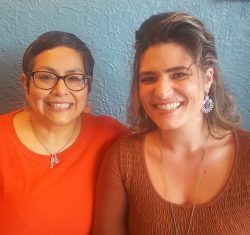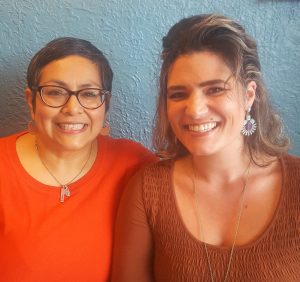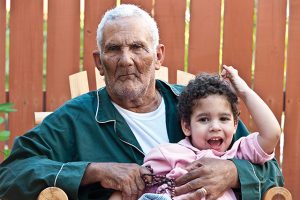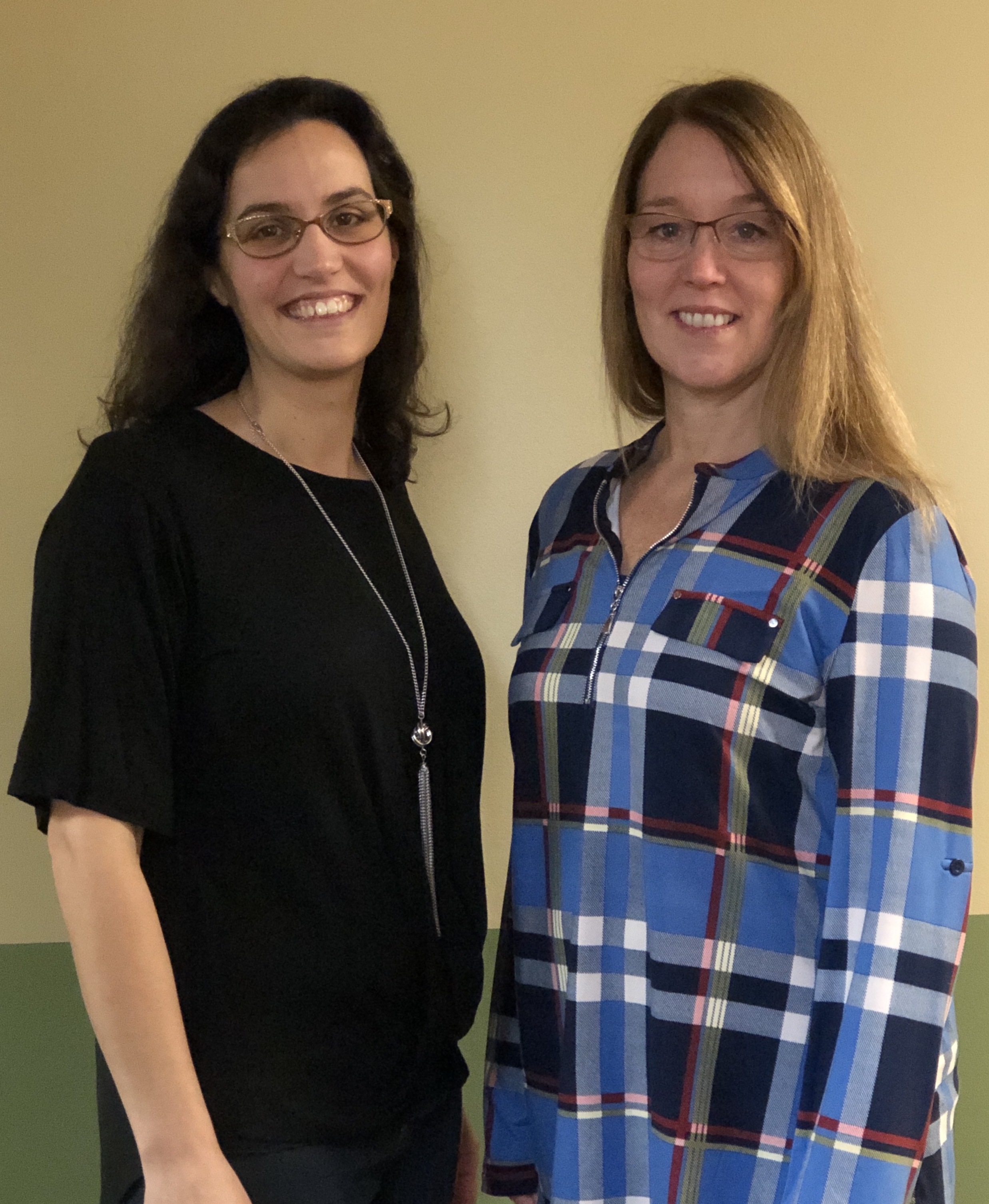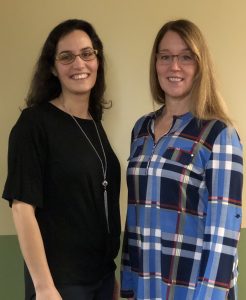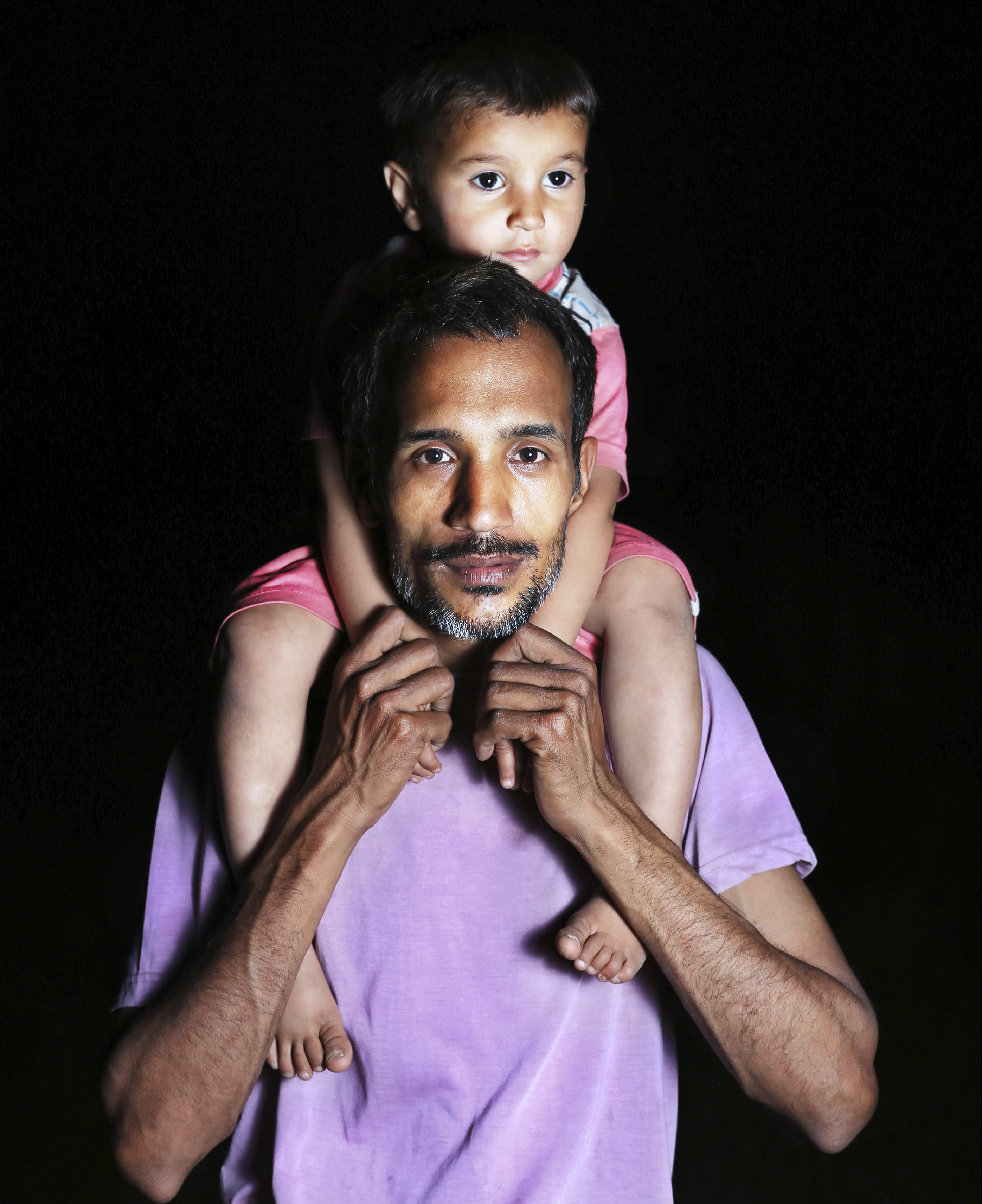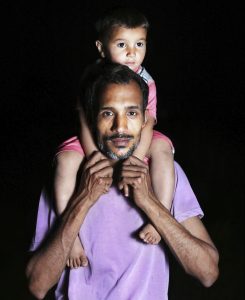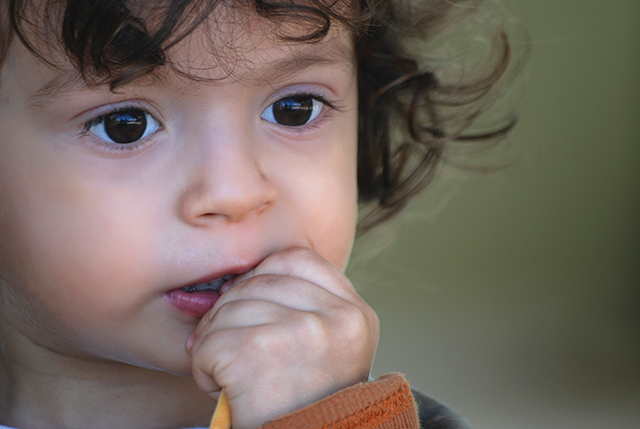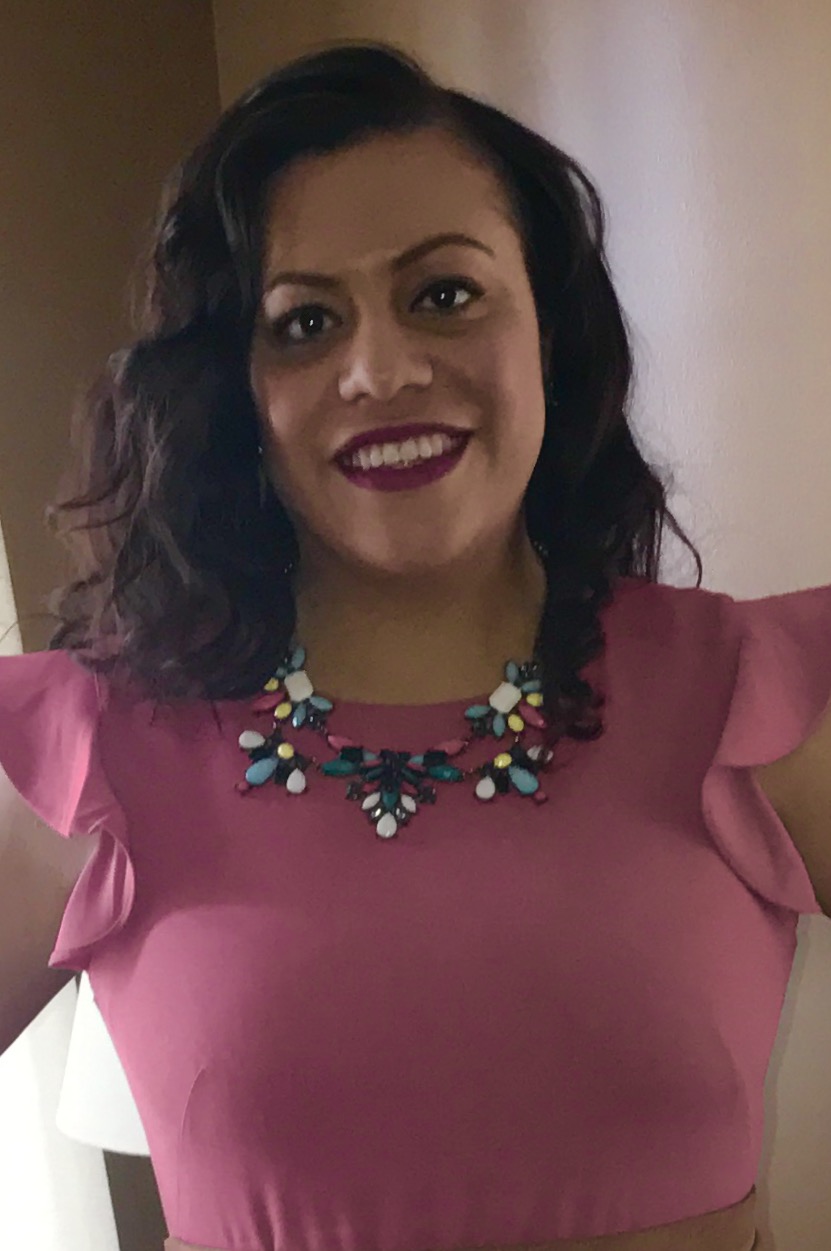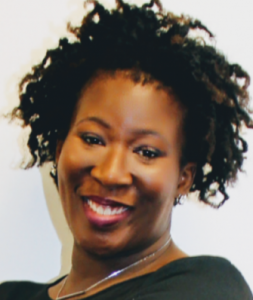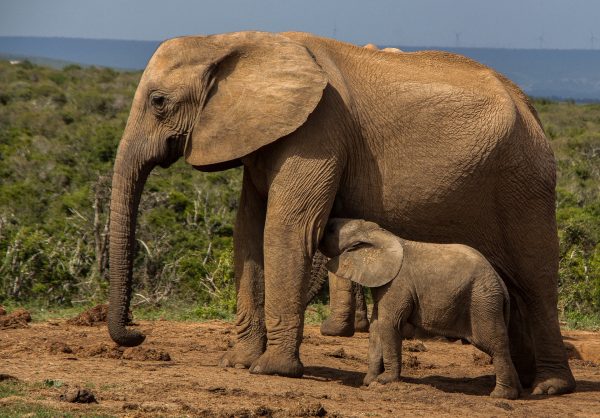Dearest reader,
The following article tells the story of the relationships, discoveries, and healing processes that have unfolded within our reflective supervisory and infant mental health relationships. These examples highlight some of the reasons why Infant Mental Health (IMH) practice pays special attention to relationships and the parallel process, and why it uses reflective supervision as one of its core components. This is our story of connecting, healing and developing within and because of relationships.
As you walk this journey with us, it is important to remember that we are embedded in relationships from the first moment of conception, and we continue to need those relationships throughout our life. The relationships we form with other humans (caregivers, family, friends, acquaintances, community) shape the ways in which we enter into all other relationships, impacting every facet of our being. While the brain and body are most impressionable to development and healing during the early years, neuroscience shows us that we have the capacity to reshape our core beliefs and deeply heal at any age under the right circumstances, with the right relationships.
Additionally, throughout our entire life we have a deep need to be seen, to feel felt and to live interdependently with one another. It is within the seemingly unconscious, minuscule moments that we share that we can be changed forever. And it is within healthy, nurturing relationships that we have a chance to heal and truly reach our fullest potential. For this reason, we must take care of the way we see ourselves, see each other and see our collective existence. We must reflect our light (good) and discontinue projecting our darkness (bad) onto our fellow humans. It is then that we may heal, together.
We hope you feel a sense of the ways we have challenged ourselves to see (to notice ourselves, others and the deep emotions experienced) and be seen (bringing our whole selves into each relationship, being vulnerable and sharing our presence). We embarked on this work together after deep individual healing, making this encounter, in this time, somewhat serendipitous, powerfully affirming and most imperative to our own development and the development of this family.
We dedicate this to one of our most daring leaders — Staci (Amy’s reflective supervisor, Angela’s field supervisor and an integral partner in the parallel process that unfolds here), and to all the helpers out there — the wounded, the healed, the novice, the veteran, the believer and the skeptic. We wrote this for us, for you, for the deep work that has been done and for the family that embarked on this brave journey with us. We wrote this in honor of our own courage to trust that relationships can change the world.
While this article and these words only capture a small piece of the work, we hope you are able to feel a sense of what it was like to share this experience, to enter into these relationships and to deeply grow personally and professionally.
With gratitude,
Amy and Angela
It’s not always as it seems
“I was ready, I had it all figured out, or so I thought. The relationships between Angela and me, between Angela and this family and the process of finding our way together has taught me how “knowing” always trips us up, and how wondering and curiosity are always there to pick us back up.” –Amy
Angela: When I began my infant mental health field placement in the fall of 2017, I was sure I had no idea what it would be like to work in the field, but I not-so-humbly believed I knew what reflective supervision was all about. It sounded like therapy to me, and I know how to do that.
Amy: I also not-so-humbly believed that I knew what reflective supervision was all about. I really thought I knew exactly what to do to make it a powerful space for both Angela and me. I had it all planned out; I would create a consistent, collaborative and reflective environment for us both to share. I would pay special attention to ruptures (those inevitable moments of misunderstanding in our relationship) and would excitedly embark on repairs (validating any hurt feelings and reconnecting with a new understanding between us). I would share my presence —— physically, mentally and emotionally, and I would honor the feelings that would show up for both of us if I ever misstepped, which I undoubtedly would. I would model vulnerability, transparency, and mindfulness. I would pay attention to the parallel process and notice the subtlest attachment cues, providing spaces for us to think about the families we would be helping while navigating our own internalized relationships, the labyrinths of our own core beliefs and how they show up in the work and between us. In some sense, I had it all figured out; in another, I had no clue what I was doing, and it is somewhere in between those two feelings that Angela and I existed together.
Bringing ourselves
“It was more than clear that Angela and I had gotten exactly who we needed in each other, and it made sense to both of us, in our own ways.” -Amy
Amy: I was both surprised and delighted when I first met Angela. I had already developed an idea of who Angela was before she had even begun her Masters of Social Work (MSW) field placement at our agency. I had expected to see a young woman in her 20s, new to the idea of IMH and the reflective process. I felt confident that I would have something to offer. To my surprise, my bias could not have proved more wrong. Sitting in front of me was a woman with a plethora of life experiences, reflective capacities that one can only aspire to and an inherent child-like desire for discovery, exploration and secure relationships. I was unsure of my own abilities. What would Angela think of me? What use could I be to her? Could she trust someone who was younger with less life experience? There was something so familiar in her and yet I felt curiously uncertain.
I chose to dig deep to try to find something that told me that I could do this. I needed a reminder that I did indeed have something to offer. I reflected deeply, remembering all of the previous healing I had done, all of the self-discovery that I worked so hard for in the past few years, and the courage I had mustered to be vulnerable, open and forgiving of myself and others. This deep introspection helped me open up to the idea that I could create a space for Angela and me to grow, heal and truly connect with one another and with this powerful infant mental health work. I spent many necessary and meaningful years traveling through the tough process of growing as a clinician in this work. I had been triggered and challenged personally and professionally. I spent countless moments wondering why I chose this field, only to be reminded (usually in some comical way, by the universe) that I was exactly where I was supposed to be. It was messy, it was joyful, it was uncomfortable — and I lived to tell the tale. I emerged a better me; I am a different human being than I was during my infancy as an IMH clinician. I have not only developed as a clinician in this work, but as a woman, mother and friend. It is because of everything I have experienced — the struggles, the successes and the heartache — that I am now better able to support other clinicians and professionals. I needed to remember that IMH is deeply embedded in my being; I am a true believer of the deep changes that IMH can bring to both families and professionals. I have been fortunate enough to see the process unfold, and I have been open to learning, reflecting and processing knowledge that would guide Angela and me as we embarked on this journey together. I was aware of the ways in which many of the families I once worked with were still with me (internally) and how I embodied the mentors that had believed in me through the years. I understood how these things would impact our work. I wondered how my newly developed and growing self-compassion would be helpful to us along the way. I wasn’t doing this alone; I was part of nurturing, predictable and secure relationships that I had worked hard to establish. Additionally, I had the trust and support of my own reflective supervisor holding me through this new experience. Everything I had done before this moment had equipped me to give what I needed to give to this relationship, to be open to learning, growing and continued healing as I stepped into this new role. I am grateful for the doubt that came to the surface as I thought about who I would be for Angela; it allowed me remember all of the hard stuff I had already done, and it made me thankful for all the hard stuff I was about to do.
As I observed an internal flood of doubt about my ability to support Angela,
it was the process of honoring my own healing journey that re-grounded me, allowing me to regain trust in myself, trust in the process and trust that I would be able to offer this relationship something wonderful.
Recognizing each of these layers of support and healing were imperative to being able to wholeheartedly and safely step into the role of supporting this delicate work for both Angela and me.
Angela: I began home visiting on my own about two months into my field placement; I trusted Amy and Staci to know the right time and the right client for me. During that time of waiting for my first referral, I met with Amy every week, and we began building our relationship. Just as I was a new home visitor, Amy was a new reflective supervisor, so we were both finding our way in this new relationship. I learned rather quickly that it wasn’t quite therapy, but I also learned right away that I could talk to Amy easily. I immediately felt comfortable with her because of her warmth, authenticity and kindness. As someone who’s been committed to my own healing for years — mostly through individual and group therapy — I recognized that Amy was someone who had done, and was continuing to do, this same kind of work. I shared experiences with her that brought me to the field of infant mental health and some areas I knew would be challenging for me. We talked about waiting, watching and wondering — three concepts that I was about to learn are very important in IMH work — which sounded a lot like patience to me, something that’s never been my strong suit.
“Our” First Family
“I see you, I’m with you, I know you as if I have met you before, and yet you are very different.” -Amy
Angela: The first family I was assigned included Sarah, a 22-year-old mom of two, Kaleb, 2½ years, and Mariah, 4 months. Kaleb had been receiving services through Early On for a speech delay — he was mostly nonverbal, saying just “yeah” and “no” (and yelling those, at that) — and was referred to infant mental health home-based services for his behavior issues: He spit and he hit. Sarah and her children lived with her parents. The children’s father — who did not live in the home — was an active co-parent, caring for the children each day when Sarah went to work. I learned from the referral that Sarah’s parents did not support her parenting, undermining her attempts to discipline Kaleb. So before even meeting them, I already felt anger toward the grandparents for how I perceived they treated their daughter.
Amy: Anger. This anger that Angela described would be a bridge. It was my understanding that this anger would lead us to a place where we might find out more about ourselves and this family. I was reminded of my own experiences of being flooded by emotions in this work, of being reminded by a family of my own humanness, my own hurt, and my own early traumas. These feelings were often painful, but were also a gift for me and for them. I validated the big feelings that Angela was experiencing; they were normal, and they gave me a clue about Angela’s openness and insight into her own “stuff” (everything we carry with us that we have collected along the way from those people and experiences that have helped us, hurt us and stuck with us). I was able to share with Angela how I’ve learned my own ways of accepting the feelings that come up in the work, of noticing them, holding them and allowing them to teach me their wisdom. I could feel the power and the vulnerability that existed in these first perceptions of this family. I knew this emotion would be an important part of our work together in the reflective space and that it would be equally important within the relationship between Angela and this family.
Angela and I often spoke about the importance of learning how to uncover, understand and reflect on our own feelings, thoughts and deep emotions so that we may begin to understand and connect with what we are seeing and feeling as we enter into relationships with young children and families. It’s a process; it requires a certain level of openness, tolerance and the ability to continually expose yourself to the uncomfortable. I felt hopeful that recognizing the anger she felt was a wonderful sign that Angela and I could gain wisdom from exploring her anger when we were ready for it.
I was excited for Angela, for us, for this family and this new experience. I believed that this uncharted piece of our work together could bring hope and new discoveries that would allow us to develop in ways we had not yet experienced together. I wondered how this piece of the work might stir up doubt and other difficult emotions for me, for her and for this family. I understood that it was important in our reflective supervision to authentically bring all that a family represents and stirs up in us into the reflective space so that we may feel and understand it. This both excited and scared me as I wondered what tough discoveries we might be challenged by. I noticed the doubt bubble in myself again, remembering some of the times as a supervisee when bringing a family into my own reflective supervisory relationships caused tension, or disorganization, and the difficult emotions I experienced as a result. I paid attention to this. I wanted to grow in my own capacity to work through the feelings that would undoubtedly come up for me and for Angela. I thought of my current reflective supervisor, the ways she was able to stay attuned with me even in the difficult times; this gave me hope. I wanted to be able to regain a calm state if Angela and I were ever to feel too overwhelmed by the work. I wanted to trust that all the healing I had done would allow me to be a safe haven (stable, attuned, protective, predictable), especially in the difficult moments, which meant I would have to continue to do my own tough work outside of our meetings to remain grounded, calm and safe for Angela as she experienced the big feelings that might come up in our space. I remained unsure, sitting with the thought that when these moments come, they will be ones of learning and practicing — for both of us.
Simultaneously, I felt confident that Angela and I had built a strong beginning together, a foundation stable enough to weather a storm, and I believed that our relationship was ready to be challenged by the unknowns of a new family. Mostly, I knew Angela had a lot to offer and that she was ready to discover “the field.”
Angela: I met Kaleb at my agency when he and his parents, Sarah and Shawn, whose relationship status was unclear to me, came for an intake. I saw a beautiful boy, with dimples and twinkling brown eyes and A LOT of energy. He went from toy to toy in the intake room while his mom and dad answered my questions. My first impression was of two parents who were looking for help in dealing with their son’s behavior. They seemed patient with him, and Sarah seemed to work hard to understand her son’s nonverbal communication.
Amy:
The hope that exists after a first encounter with a family — that’s what I remember feeling after reflecting on this visit with Angela. The feeling is unique, it is energizing, and it’s what I have come to find as one of the most beautiful parts of this work.
It was even more fascinating to be able to experience this through Angela’s lens. I deeply listened as she described what she had seen, heard and felt. I watched as the wonderings began to take shape, as the optimism and excitement about who this family was, who they might be and what she could be for them took form.
Angela: Amy accompanied me on my first home visit with the family to help me complete paperwork, and I was so grateful for her support. It was at that visit that I met Grandpa, Sarah’s dad. Grandpa asked questions about ways to improve Kaleb’s behavior, and I immediately thought he saw Kaleb as a problem to be fixed. But I had already formed an opinion about him, so I’m not sure he had a chance of making a good impression on me.
Amy: I experienced some feelings of relief that this was the first family that Angela was able to work with. Having been in this field for some time, I understand that there is a wide range of young children, families and environments that a practitioner may encounter. This home appeared to be safe and clean, with plenty of room to sit and play; this would be the space where Angela and this family would embark on the (sometimes difficult) work of Infant Mental Health therapy.
During this visit I was in an important role; I was the observer, the supporter, the holder for Angela; I was there for her. I stepped lightly in supporting Angela; I sat close, and allowed her to lead. I remember mentally attending to the parallel process, trying to support her in the ways that she could begin to support this mother. Angela amazed me. She was gentle and curious, and she balanced the unknowns of paperwork and attending to the new relationship like a skilled juggler. Angela and I spoke on the car ride home. I shared my delight with her, my feelings of pride and amazement around the ways she was able to be with this family. I held her experience through deeply listening while she reflected on her own feelings about her first home visit. I made mental notes of how she described Grandpa, wondering how these feelings might connect with things we had already begun to explore about her own relationship histories, feeling certain (based on my own previous experiences) that if this connection was important it would visit us again.
I also experienced feelings of pride for myself. I was able to show myself a sense of compassion for accomplishing my first home visit in the role of reflective supervisor, for remaining intentional and aware during the visit and for vulnerably expressing my thoughts and feelings to Angela after the visit. I was proud of myself for showing her that I truly see her and truly support her. I remember also bravely asking for feedback, if there was anything I could have done differently. I was modeling transparency and openness in this moment, something I believe is imperative for a truly collaborative relationship like the one I was working to establish. This was a growing moment for both of us, and we got through it together. I feel proud of that.
Angela: On my first solo home visit, I was sitting in the living room with Sarah and the children. Grandpa came home from work, said hello (he and his wife were always very hospitable, saying hello and offering me something to drink or eat), and then asked me something to the effect of “what’s wrong with him?” about his grandson. Inwardly I was angry at the way he talked about his grandson and felt very protective of Kaleb. I kept calm and responded that, after one visit, I didn’t feel comfortable giving any kind of evaluation. I also added that what I saw so far was a very spirited little boy.
Amy: I can recall Angela describing this visit; the feelings that arose for her were brought to life in the space we shared. I remember my own internal struggle of not wanting to push too hard or too soon, but also needing to acknowledge that there was more to be discovered than what met the eye, not only for this family, but also for Angela’s healing. This balance was difficult, and it was hard for me to hold what I was thinking, feeling, wondering. When I did express thoughts or feelings too soon, just as in past home visits with a caregiver, all of the signs were there that I’d gotten it “wrong” (averted gaze, tension, dismissiveness), that what I was saying was being offered “too soon” or that what I really needed to be doing was listening, deeply. My own eagerness, and dare I say ego, got in the way in these moments. I prematurely “knew” things that weren’t yet mine to know. I had to re-learn how to watch, wait and wonder in this new role. Fortunately, I understood that rupture and repair are the very essence of what strong relationships are built on, and so I excitedly and cautiously gave words to these mis-attunements. I noticed and narrated these missteps and allowed Angela the space to be open with me about how I may have gotten it wrong, and how it made her feel. I invited her to clarify how she saw or felt things.
I also often shared with Angela some of my journeys of healing alongside a family, and I cautiously wondered if the entanglement with this family would uncover a similar parallel. We processed a bit of this session, and came to realize that not only were Angela’s feelings and responses important for herself and for Kaleb, but that it could in fact be Sarah who was most protected by Angela’s thoughtful comment about Kaleb being a spirited little boy rather than a child with a problem. This mom needed a supporter, someone who could see her and her son in a positive light and someone who could protect them from the judgment and criticism they so often encountered. Angela deeply nurtured this relationship and established her role with this family in this brief and intentional response.
Angela: For the next several weeks, I would visit with Sarah and her children for 5 to 10 minutes before Grandpa got home from work. We met in the living room and, once he arrived, he repeatedly would enter the room to ask me questions, scold Kaleb for some behavior, or scold Sarah for not controlling Kaleb. I found myself tensing up whenever I saw his car pull in the driveway and felt angry when he would interrupt our visits. I imagined myself as a cartoon character with steam shooting out of my ears. Outwardly I kept my calm and often bit my tongue. I felt very protective and defensive of Sarah and her children. I saw so many strengths in her as a mom. Once, when Kaleb acted out in a way that could have hurt his sister, Sarah moved the baby out of harm’s way and then started to say something negative about Kaleb. She stopped, took a breath, and said quietly to herself, “Don’t be mean, don’t be mean.” I commended her for doing this. Not because I thought it was what she should do, but because I could tell she was very conscious of the type of parent she wanted to be.
It was then I found myself wondering who the angel in her life was who showed her a different way to talk to her children.
Clearly she was trying to be a different parent than the ones she had. (Grandma was rarely home during visits, but when she was, she often yelled at Sarah and Kaleb from the other room.)
Amy: Angela and I often spoke about angels and ghosts; the people, relationships and experiences of our past and present that are nurturing and safe (angels) and those that represent hurt and loss (ghosts). These angels and ghosts can show up in the most unlikely places — we can be reminded of them by sight, touch, smell, noises and feelings. This is especially true in the infant and early childhood field where we are immersed in relationships that often represent our own early relationship histories in some way or another. Angela and I explored the idea that as early interventionists and reflective supervisors we have the unique role of being able to become angels for those we work with. Angela often found it hard to feel and see her potency in this work with this family, a theme I find most apparent in developing clinicians, myself included. I would gently nudge here and there, hoping that Angela could catch a glimpse of how she had become an angel for this mother that allowed her to treat her son differently.
When we are with a family who is ready for an angel, those integrations can happen more quickly. A family’s response to the feelings of being felt, of being seen and of being reflected in the positive light of another comes with no certain timeframe. With some families we will not be around to see the signs that show us where our work has made an impact, while others may show us right away. The qualities of this particular relationship with this family had all the makings of a safe, healing relationship. Angela and I used our space to go deep into our own internal worlds, emerging to bring our attention back to the family, reflecting on the space we all shared and around again, over and over. There was something oddly organic about our work together, about our meeting at this time in each of our lives and about our ability to truly be there with one another.
Trusting the process
“How is it that we may trust that which we have not felt? How is it that we can trust change, interconnectedness, fluidity, and truly see things for what they are? Let’s not go at it alone, let’s do this together.” -Amy
Angela: My sessions with Amy consisted of me venting the anger I contained during the home visits and exploring why I was so triggered. He was Kaleb’s grandpa; it was his house and his family, and yet I could not see him as anything other than someone from whom Sarah and Kaleb needed to be protected. I seemed unable to let go of that idea. Amy asked me questions about Grandpa. We talked about what it must be like for him, and she tried to help me imagine his experience as Sarah’s dad and Kaleb’s grandpa. We also thought about what it must be like for Sarah and Kaleb. If I felt stifled and emotionally unsafe there, how must Sarah and Kaleb feel?
Because Grandpa was usually there, I was not comfortable asking Sarah much about her relationship with her parents or with the children’s father. I didn’t think it was a safe space for her to share on those topics. After many weeks of sharing with Amy how intrusive Grandpa was, and how I believed Sarah couldn’t share openly while he was in earshot, Amy suggested I ask Sarah if she wanted to meet at the agency or somewhere in the community. I had not known this was even an option. Sarah agreed, and we had a couple of uninterrupted sessions at the agency. She talked to me about her parents’ lack of support — she was planning to move out soon, and they repeatedly told her she couldn’t do it on her own — and I reminded her of all she was already doing as a mom. I didn’t know if anyone in her life acknowledged how hard she was working to be a good mother. As good as it felt to not have to deal with Grandpa, I knew that just avoiding him wasn’t a good solution since Sarah and Kaleb lived with him and he was an important part of the family. And avoiding Grandpa wasn’t good for my growth as an IMH therapist either, as much as I hated to admit it. So we began alternating home and agency visits. The space from Grandpa allowed me to be a little more relaxed and open the next time I saw him. I don’t know if his behavior was any different, but I knew my attitude was. I wondered if Sarah and Kaleb felt any difference after having some visits away from him.
Amy: It’s funny how at times a word can be so fitting and at other times be completely unable to carry the weight of that which it is describing. From my lens, the word “venting” only scratches the surface of what Angela was doing. It does not adequately capture the deep and healing processing that went on in our reflective spaces. Angela and I revisited her feelings, observations and relationship with the family almost every meeting. I saw pure delight when Angela spoke of Kaleb and of his mother. She was amazed by mom’s resilience and was absolutely adoring of Kaleb. I remember feeling warmth toward Angela in these moments, as well as in the moments that she chose to be open and vulnerable about all the emotion that this grandpa stirred up in her. I knew one of my most important roles was going to be holding Angela’s experience and helping her begin to peel back the layers that would allow her to see Grandpa separate from the internalized version she held of him. I had to be there with her, to hold her — this holding is not physical, rather I was deeply listening in a nonjudgmental and accepting way, leaving room for the emotions and thoughts that she experienced. I used this type of holding as a way to co-regulate, or to help calm, which allowed us to better understand what was going on with both Angela and this family, and partner with her as we regained internal safety. I supported her in regaining external safety by exploring alternative options for the home visit environment. It was clear that by over-exposure to this very triggering figure, for Angela, and for this family, the work was being done in the context of what felt like a ghost. We spoke about boundaries, and about how sometimes we need to create distance from that which is getting us “stuck” — a word we often used to describe the almost tangible feelings that came up when talking about this family and our own relationship histories — as a way to open to new perspectives, and so we experimented.
Angela: Despite that small shift, I still felt triggered by Grandpa, and my sessions with Amy continued to include lots of venting about him, exploring my strong reactions to him and, of course, how Sarah and Kaleb might also be triggered by him. With Amy’s help, I was able to see that Grandpa’s words triggered shame in me, reminding me of some critical people in my life. While I’m sure my instinct to protect my clients was largely due to my commitment to them, I can acknowledge that my need to protect my inner child also was being triggered. Without Amy’s supervision, I think my work with the family would have been impeded by that. She held the space for me to explore my personal relationships and how my feelings about those relationships were impacting the way I saw and interacted with Grandpa. And she continued to reframe things for me to help me do that. I’m not sure I had the faith she did that it would happen.
Amy: These shifts, these discoveries and the fact that Angela was able to come to them in the space we shared was powerful. Her ability to acknowledge her own inner child’s need for protection was imperative to deeper knowing here, and that she allowed me to protect with her enabled us to move through this together. Much like this mom was open to talking and exploring with Angela, Angela too was open to our relationship, her door was open and I was careful and intentional about how I would walk in, how I would be with her, be there for her, and honor the gems, the darkness and the light that she so generously shared with me. This was not just “this family” or just “this grandpa” or just “this thing we get to do.” This was transformative.
Opening to New Experiences
“It is only within the integration of new experiences that our core beliefs can grow, change and shift. We must seek out the uncomfortable new experiences that conflict with our maladaptive beliefs; it is then that we can feel the change.” -Amy
Angela: One day I showed up for my session and Sarah was backing out of the driveway while Kaleb and Grandpa looked on. She told me she had to hurry to get a low tire repaired before the shop closed and asked if it was OK if I had a session just with Kaleb and her dad that day. I immediately panicked at the thought of spending 60 to 90 minutes with Grandpa but decided to stay after briefly checking in with my field supervisor. I’d been looking for an opportunity to reframe Kaleb’s behavior for Grandpa but had never felt comfortable doing that. And I don’t think I previously was able to hold space for him to hear me.
During this visit, he commented about Kaleb’s speech delay, and I felt comfortable enough to say, “I know it’s frustrating. Imagine how frustrating it must be for him not to be able to express himself.” He listened attentively and didn’t say anything critical or dismissive. That was a breakthrough for both of us in my book. As I was preparing to leave, Kaleb needed his diaper changed, but was hiding under the table. I was going to wait for Grandpa to change him before I said goodbye, but Grandpa informed me he had quite a mess and it was going to be a while. So I left the two in the bathroom, with Kaleb standing in the shower as Grandpa cleaned him up. As I was walking away, I overheard Grandpa say — in a caring tone I had never heard from him before — “That’s OK, Kaleb. Everyone has accidents.” I got into my car and immediately called Amy to share that with her. I was emotional and teary, sharing what felt like a huge breakthrough for me and Grandpa. That was the first time I had witnessed him being tender with Kaleb, and I finally saw him as a grandfather worried about his grandson. Several months later it still brings tears to my eyes.
Amy: I can still remember this phone call; the happiness and transformed perspective that Angela shared was beautiful. I wondered how this would shift her work with this family, how she, Sarah, and Grandpa included, may have a new way together to support Kaleb. It was clear to me that Kaleb was being honored in Angela’s new perspective allowing her to truly see parts of his grandpa that Angela’s lens, and grandpa’s defenses, did not allow her to see before. Grandpa existed in a new light, which meant Kaleb also existed in a new light and within a new relationship. I was curious about how the inner child in Angela may have had some healing and relief in this moment and through this new experience. I remained curious about how Sarah and Angela might be able to share a new experience together, one where Grandpa was neither the villain nor the hero. I believed this unexpected meeting between Angela, Grandpa and Kaleb all happened for a reason. I believe we get what we need when we are ready for it, and Angela, and Grandpa for that matter, were ready for this growth, ready to see things differently. It was in Angela and Grandpa’s shifting relationship that Kaleb and mom were truly seen. Two of their primary supports were finally in some sense of attunement, both with the intention of protecting this dyad, both with very different ways of showing their care and love, and now, both able to see one another.
This different lens also offered Angela and me a new way to be together. I remember vividly the ways in which certain caregivers or families I worked with as an IMH clinician triggered something in my inner child that caused me to need protection of my own, and what a relief it was when I was able to work through, separate and see things more clearly. I think a deeper part of me was validated and able to heal through experiencing and supporting this healing in Angela and in this family. We all had something to offer and something to gain through this difficult work. We are all connected in this way.
Holding the Chaos
“When we are safe enough to release our need to control both the internal and external worlds, something beautiful happens. We shift from needing to be in control to being able to gently hold what comes up. Let us build relationships of acceptance with the chaos so that we and those we have connected with can move through it more gracefully.” -Amy
Angela: Just as before, this breakthrough with Grandpa — though more significant than the earlier shift I had toward him — doesn’t mean I was never triggered by him again, but I think it let me relax a bit in my urge to protect Sarah and focus more on supporting her. I continued to ask her about her progress toward moving out. She had looked into apartments and said the children’s dad was most likely moving in with them, but I didn’t get a strong sense of urgency from her. Widening my view of Grandpa a bit helped me hold space for the possible reasons Sarah might be dragging her feet, because I wasn’t as convinced that she needed to get out of the house as soon as possible. She was talkative and receptive, but she did not share deep feelings easily, so I just continued to support her and ask questions. Throughout our work together, I had struggled with my role with her. I wasn’t sure if I was having an impact and couldn’t shake my fear that Sarah didn’t think I was doing anything. One of the ways this fear came up in our work was that I hesitated to talk to her about terminating our relationship and the possibility of her transferring to another IMH therapist. Part of me feared if she said no, that would be confirmation of my fear that I wasn’t effective. We touched on the topic more than once but she never shared a concrete answer with me about continuing services. My self-doubt told me that if she did not continue with services, it was because she did not value our work together.
Amy: This breakthrough and the work that followed were big. We laughed, cried and laughed again. How could it be that this grandpa was anything other than an awful ghost here to haunt us in the most unnerving of ways? How was it that he was able to be both a ghost and an angel? Sigh. This was quite a shift, one that I must admit I needed. I needed to know that the ways that I was holding Angela, the gentle seeds I was planting, and watering, and nurturing, would flower. I needed to know that the inner child in me, in Angela and in each member of this family would have some relief, some healing. I know we don’t always get so lucky. I know the work isn’t always so clear in the reflective room, or in the home, but I believe we get what we get when we are ready for it or, maybe in this case, when we need it. It was from this point that the murky waters settled, and that we could have more cohesive and clear conversations and reflections about this family. Angela was insightful in her reflections, and we built a narrative around the process that brought us to this clearer space. We did not abandon our earlier “knowings” of this family or of ourselves, but we did gain some balance, which meant everyone gained some balance, Kaleb included.
Angela struggled with her own feelings of worthiness and of potency in her work with Sarah and Kaleb. In parallel, this mom often questioned herself and her abilities to support and nurture Kaleb, and I too observed as my own feelings of doubt once again bubbled to the surface. Angela often questioned how she was being helpful, or shared thoughts that if the family did not continue with IMH it would be a direct result of her “faulty skills.” I watched, I held, I prematurely offered my own thoughts that were sometimes missed or quickly replaced by Angela for far more appealing evidence that she was “doing nothing.” I had to step back, I had to be there with her, I needed to hear her worries and to help her explore them rather than to replace them with my perspective. We needed to feel this together, the doubt, the guilt, and the stuck-ness. Another bridge. This bridge was sometimes painful, but most meaningful to Angela’s development in this work and my development as a reflective supervisor. So we sat with her self-doubt as I indulged and I held the “what ifs.” “What if she doesn’t continue with IMH work?” “What if you aren’t doing anything?” “What if…” We stayed here for a while, until those words no longer held so much power, until they were just words, until we connected with the feeling that we cannot infer anything from the answers we were finding. We stayed just until we could walk a bit more confidently into the space where we could deeply believe that both this family and we were positively changed just from having been held by us. Angela “visited” this more confident space with me from time to time. She also, often and most purposefully, stepped out of this confident space and back into the very meaningful space of doubt. And I did my best to hold it.
The Good-goodbyes
“If we can stick around for them and truly bring ourselves, we might catch a glimpse of what we really meant to one another when we say “goodbye.”” -Amy
Angela: Sarah had always been very conscientious about our appointments. It took a lot of effort for her to show up — physically, mentally and emotionally — each week. She would pick up the children after a full day of work, getting home right before I arrived — sometimes at the same time — and then spend one to two hours with me. I knew she was committed. So I was surprised when, in the last six weeks of my semester, she canceled two appointments in a row and `didn’t return my phone call. I thought she had decided to end services without telling me. I had been dreading having to say goodbye to this family I had grown to care about, this little boy I adored, and had been talking to Amy about it for a while (my strongest comfort about leaving them was that Amy and Staci had decided Amy would take over the case if the family decided to continue services). The idea that I might not be able to say goodbye was hard for me to accept. It turns out that car issues and changes in her work schedule had made it difficult for Sarah to keep our appointments, so I did have my chance to say goodbye. But it wasn’t until our final session that she told me she wasn’t going to continue services. She hoped to get Kaleb into Early Head Start and thought it would be too much to do both. I reminded her that she could call the agency if she ever wanted to start services again and gave her a card thanking her for allowing me to work with her family. I told her she had so many strengths as a mom and that the children were lucky to have her on their side. She and Kaleb gave me a thank you card, and Sarah and her mom both hugged me goodbye. I drove away with tears in my eyes, grateful to know this family.
Amy: Behavior really does say what can’t be said. Goodbyes are hard, you meant something, I’m going to miss you. My own journey through life and in this work has taught me that goodbyes represent vulnerability. They trigger us to become avoidant, doubtful and sometimes dismissive around ourselves and those we have grown to love. Goodbyes teach us, they challenge us, and they call us to action. It has been healing for me to learn my goodbye language. It was a tough process; it took messing up, fumbling and learning how to truly and deeply share my feelings with others, regardless of what they are able to give back. I talked with Angela about the difficulty of goodbyes, and we shared stories about what the world has taught us about leaving and being left, about how we have healed from goodbyes that weren’t spoken, that were left un-honored, that weren’t respectful and that were traumatic for us. This helped us think about what type of goodbye we wanted to share with this family and with each other, I scaffolded with Angela as she formed ideas about how she would facilitate a good-goodbye with this family if she got the chance. What would she like to say? How would she say it? How would it feel to share in this way? I also shared some of my own failures and successes in separating from families or people in my life. And, whether this family allowed us to have a good goodbye or not was up to them. How we worked through the feelings that were triggered by this and how we made meaning of the time we shared was up to us. We were in this together, and I felt that Angela truly trusted that.
Angela had been quite convinced that these missed appointments meant she would not hear from Sarah and Kaleb before her semester was over; I wasn’t so sure. I remained skeptical, I believed these missed appointments were a way for Sarah to express herself around the looming separation in the coming weeks, one in which Sarah had to make a big decision, to continue or to be done for now. I remember throughout our work together that I often encouraged Angela to use her own feelings to clue her into how the family felt or to help give words to something, and this was one of those times. And while it was difficult for Angela to imagine that Sarah and Kaleb could have such strong and positive feelings about her, the behaviors really showed us otherwise. Sure enough, Sarah, Kaleb and Angela got their good-goodbye where they bravely faced one another and said the things that seemed impossible to say.
Angela: In the following session with Amy, I think I was still stuck on this idea that I hadn’t been effective with this family. I had been told that sometimes we don’t get to see the results of our work while we’re actually working with the family, but part of me was hoping for a clear message saying “THIS is how you helped this family!” The only thing I saw very clearly was that I was triggered by Grandpa and that my reactions to his behavior had nothing to do with Sarah and Kaleb. There were so many sessions in which I found myself talking about people in my life whom I have felt triggered by in similar ways. I remember stopping to ask Amy if it was OK to talk about them, thinking it wasn’t related in any way to my work with this family. I know now that Amy knew it WAS related, and that talking about it in our sessions was an important part of the process. My work with the family ended in the spring, and I still wonder, “Who was I for this family?” I know part of this work is being OK with not knowing the answer.
Amy: I continued to be amazed by Angela — and by myself for that matter. Her work with this family, my work with her and the ways in which we both braved our own internal darkness, light, ghosts and angels, all in an attempt to get “unstuck” so that she could help this mom and this baby and so that I could support her — it was all profound. I saw Angela, and I believe that allowed Angela to see this mom, I mean truly see her and truly delight in her. That, in turn, allowed Kaleb to be seen, to be held and to be delighted in in ways that he needed so that he could heal, develop and thrive with those who loved him, for him. I have a deep sense of warmth when I think about who I was able to be for Angela as she embraced this new experience. It moves me to think about the gift that Angela was for this mom and this baby. And, it’s OK that, sometimes, Angela didn’t know who she was for this family. It’s OK that sometimes she felt that the answer was clear while at other times she felt that she had no clue. That’s just what it is.
Who we are to each other
“No one can take away that which has become integrated, the space we shared, and what we are to one another, thanks for being an angel.” -Amy
Angela: Saying goodbye to Amy wasn’t as difficult. I knew I would miss my sessions with her but I had no doubts about who we were to each other. Having our first reflective supervision experience together felt so significant to me. Having known nothing about my field agency when I was placed there, I left believing that the universe had brought me to the agency for the purpose of working, healing and growing with Amy. I knew I had a rich, beautiful, authentic experience that would be a strong base for my work in the field
Amy: It’s almost unreal to think of the time that we shared. We both moved through our “first first” together. We discovered so many parallels in the work, in the reflective space and in life. We were raw, transparent, forgiving and open. We were brave and willing enough to trust each other, to mess up, to repair and to bare ourselves. We took our shoes off, we got comfortable, and we challenged ourselves to be seen and to see.
We didn’t do it alone, we were surrounded by support and love, intertwined in many other healthy, interdependent relationships within our team, and each of those pieces was meaningful, they each played a role that enabled us to support the family and to see Kaleb. I can visualize it, and it’s wonderful — in the center there is the family (Grandpa and Mom and her children), with Angela holding them, with me holding her holding them, with Staci holding me, holding Angela, holding the family, with our team holding us all — the parallel process was palpable. We were living it. It was cohesive, predictable and stable. We each took care of our parts and of one another. I feel honored to have had this experience, to have connected with Angela in this way, and to have had the large amount of unconditional love and support surrounding us.
Angela and I knew our “goodbye” was only for now, and not really a goodbye at all, for you never really say “goodbye” to someone and something that has become a part of you.

